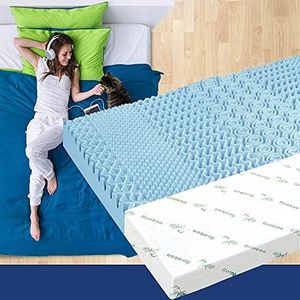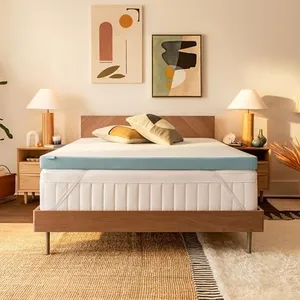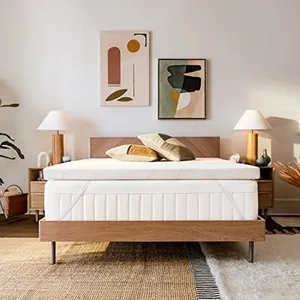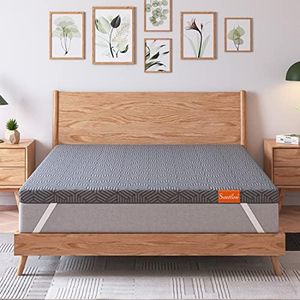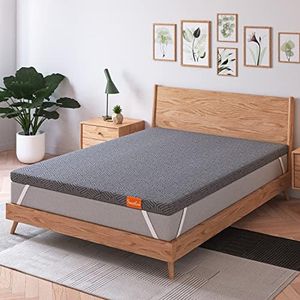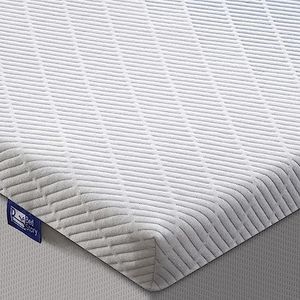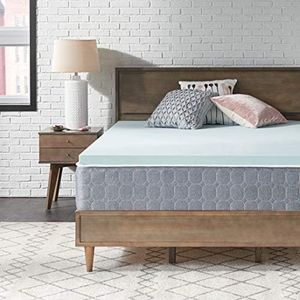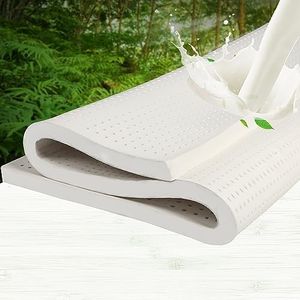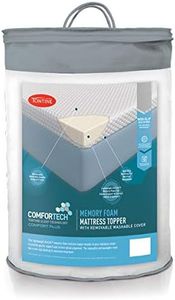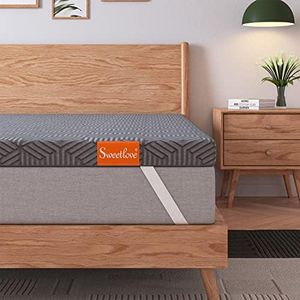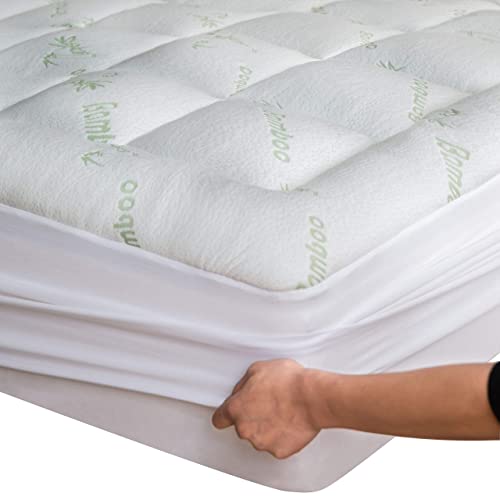We Use CookiesWe use cookies to enhance the security, performance,
functionality and for analytical and promotional activities. By continuing to browse this site you
are agreeing to our privacy policy
10 Best Firm Mattress Toppers
From leading brands and best sellers available on the web.Buying Guide for the Best Firm Mattress Toppers
Choosing a firm mattress topper can transform your sleeping experience, especially if your current mattress feels too soft or lacks support. Mattress toppers are a great way to adjust firmness without the cost and hassle of buying a new mattress. The key is to identify what aspect of your sleep you want to improve—whether it's extra support for your back, reducing motion transfer, or simply creating a more comfortable sleep surface—and then match those needs to the right topper features.Firmness LevelFirmness measures how hard or soft a mattress topper feels under your body. For toppers, 'firm' usually means that the surface provides strong support and doesn't sink in much when you lie down. Firmness is important because it directly affects your spinal alignment and pressure relief. There are different degrees of firmness: some toppers are moderately firm, offering a balance of support and comfort, while others are extra firm for maximum support. If you want better back support or have a heavier body weight, a firmer topper is generally more suitable. Lighter individuals or those who prefer a bit of softness may want to avoid toppers at the highest end of the firmness spectrum.
Material TypeThe material of a mattress topper determines how it feels, how much support it provides, and how it responds to your body. Common materials include memory foam, latex, and high-density polyfoam. Memory foam molds to your shape but can be made in firm versions for better support. Latex tends to offer natural firmness with some responsiveness and is also good for those who want a cooler sleep or need hypoallergenic properties. High-density polyfoam is another option for those seeking a low-cost but supportive topper. To pick the right one, consider if you want contouring support (memory foam), eco-friendliness (latex), or durability (all materials can be durable when high quality, but latex and dense foams often last longer).
ThicknessThickness affects both comfort and support. Firm mattress toppers typically range from about 2 to 4 inches thick. Thicker toppers provide more noticeable firmness and are better at hiding the feel of the original mattress underneath, which is ideal if your mattress is very soft or saggy. Thinner toppers offer a subtle change and are best if your mattress just needs a slight boost in firmness. If you want a significant change, go for a topper on the thicker end; if you want something more minimal, a thinner topper will do the trick.
Cooling and BreathabilityA firm topper can sometimes trap heat, especially if made from dense foam, so cooling properties and breathability become important for comfort. Some toppers are designed with gel infusions, open-cell structures, or made of naturally breathable materials like latex. If you tend to sleep hot or live in a warm climate, look for toppers specifically marketed as cooling or that mention airflow design. For those not concerned about temperature, regular foam or latex works fine.
Motion IsolationMotion isolation refers to a topper’s ability to prevent movement from traveling across the bed. This is particularly important if you share a bed with someone and are easily disturbed by their movements. Firm memory foam toppers usually excel at absorbing movement, while latex can also perform well but is usually slightly more responsive. If you're a light sleeper or your partner moves at night, prioritize motion isolation.
Allergy FriendlinessSome mattress topper materials are naturally resistant to allergens like dust mites and mold, making them a good choice for people with allergies. Latex is especially known for being hypoallergenic, while memory foam and polyfoam can also be treated to resist allergens. If you’re sensitive to allergens, check that the topper material is hypoallergenic or has been treated to prevent allergen accumulation.
